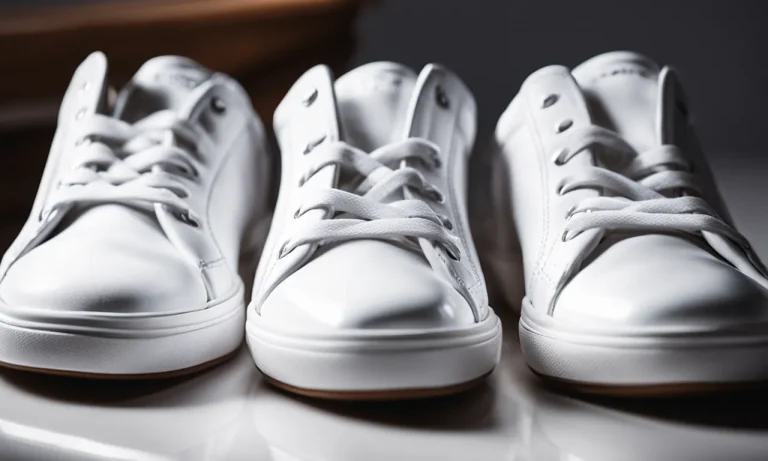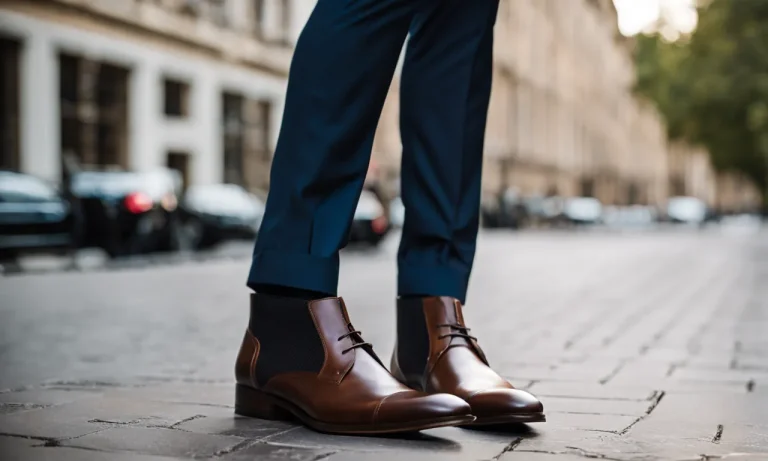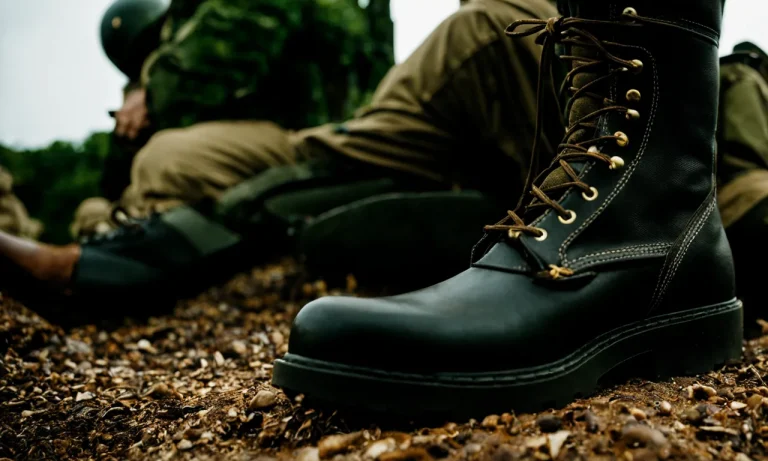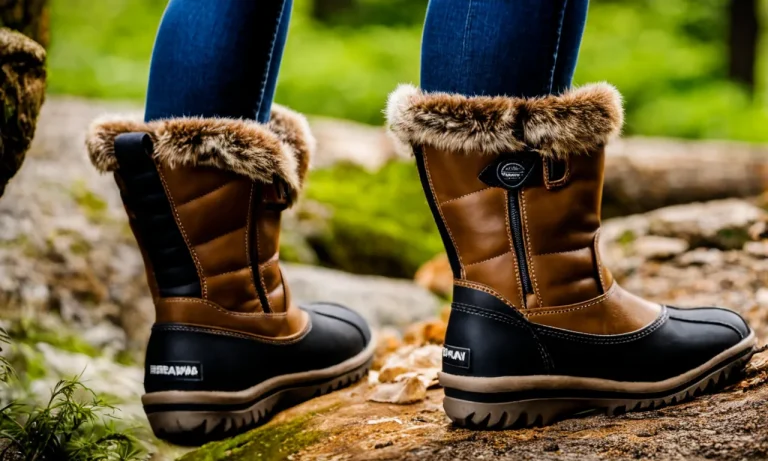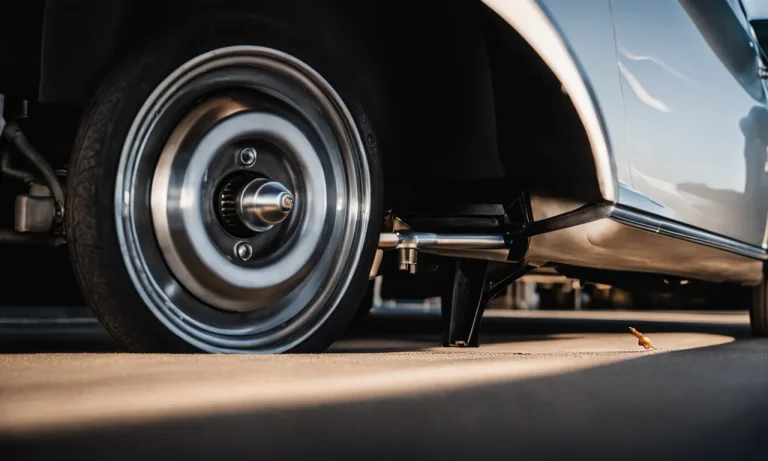If you’ve noticed cracks forming in your favorite leather boots, don’t despair. Cracks in leather boots are common, but with the right care and maintenance, you can repair cracks and prevent new ones from forming.
If you’re short on time, here’s a quick answer to your question: Use a leather conditioner to rehydrate the leather, fill cracks with a filler product, then seal everything with wax polish.
In this comprehensive guide, we’ll cover the most common causes of cracked leather boots, explain step-by-step how to repair cracks, and provide tips to extend the life of your boots by preventing cracks.
What Causes Cracks in Leather Boots?
Leather boots are a popular choice for their durability and style. However, over time, cracks can appear, compromising both the appearance and functionality of the boots. Understanding the causes of these cracks can help you take preventive measures and keep your boots in great condition.
Here are some common reasons why leather boots develop cracks:
Dryness
One of the primary causes of cracks in leather boots is dryness. When leather lacks moisture, it becomes stiff and brittle, making it more prone to cracking. Exposure to extreme heat, low humidity, or prolonged sunlight can accelerate the drying process, leading to cracks.
Additionally, improper care and neglect can also contribute to dryness. To prevent this, it’s crucial to regularly moisturize your leather boots with a suitable leather conditioner or cream. This helps replenish the natural oils and maintain the flexibility of the leather.
Wear and Tear
Another factor that can cause cracks in leather boots is wear and tear. Daily use, rough handling, and exposure to harsh elements can take a toll on your boots. Constant bending, flexing, and pressure can weaken the leather, making it more susceptible to cracking.
Activities such as hiking, walking on uneven surfaces, or participating in outdoor sports can accelerate wear and tear. To minimize damage, it’s essential to choose boots made from high-quality leather and reinforce them with protective coatings or sprays.
Regularly inspecting your boots for signs of damage and addressing them promptly can also extend their lifespan.
Improper Storage
Improper storage can also contribute to the development of cracks in leather boots. Storing your boots in areas with extreme temperatures, such as attics or garages, can cause the leather to expand or contract, leading to cracks.
Similarly, storing them in damp or humid environments can promote the growth of mold or mildew, which can damage the leather. To ensure the longevity of your boots, it’s recommended to store them in a cool, dry place with proper ventilation.
Using shoe trees or stuffing them with acid-free tissue paper can help maintain their shape and prevent creases or folds that can potentially lead to cracks.
By understanding these common causes of cracks in leather boots and taking preventive measures, you can ensure that your boots stay in excellent condition for years to come. Remember to regularly clean, moisturize, and protect your boots, and store them properly when not in use.
Taking care of your leather boots will not only preserve their appearance but also extend their lifespan, saving you money in the long run.
How to Repair Cracks in Leather Boots
Leather boots are a stylish and durable footwear option, but over time, they can develop cracks that not only affect their appearance but also compromise their integrity. Fortunately, with the right techniques and materials, you can easily repair these cracks and restore your boots to their former glory.
Here are three simple steps to fix cracks in leather boots:
Clean and Condition the Leather
The first step in repairing cracks in leather boots is to clean and condition the leather. Start by wiping away any dirt or debris with a soft cloth or brush. Then, apply a leather cleaner to remove any stains or discoloration.
After cleaning, apply a leather conditioner to moisturize and soften the leather, which helps to prevent further cracking. Conditioning the leather regularly can also extend the lifespan of your boots.
Fill in Cracks
Once the leather is clean and conditioned, you can proceed to fill in the cracks. There are several products available specifically designed for this purpose, such as leather fillers and leather repair kits. These products usually come with detailed instructions on how to use them effectively.
Follow the instructions carefully, applying the filler or repair compound to the cracks and smoothing it out with a spatula or your finger. Allow the filler to dry completely before moving on to the next step.
Seal with Polish
After filling in the cracks, it’s important to seal the repaired areas with a leather polish or wax. This not only helps to protect the leather but also gives it a smoother and more polished appearance. Apply the polish or wax using a soft cloth, working it into the cracks and surrounding areas.
Allow it to dry according to the product instructions, and then buff the leather gently with a clean cloth to achieve a glossy finish.
By following these three steps – cleaning and conditioning the leather, filling in the cracks, and sealing with polish – you can effectively repair cracks in leather boots and extend their lifespan. Remember to always read and follow the instructions provided with any leather repair products you use.
With proper care and maintenance, your leather boots can continue to provide you with comfort and style for years to come.
Tips to Prevent Cracks in Leather Boots
Leather boots are not only stylish but also durable. However, over time, they can develop cracks if not properly cared for. To maintain the longevity of your leather boots and prevent cracks from forming, follow these useful tips:
Moisturize Regularly
One of the most important steps in preventing cracks in leather boots is to moisturize them regularly. Leather is a natural material that can dry out and become brittle, leading to cracks. To keep your boots looking great, apply a leather conditioner or moisturizer to nourish the leather and keep it supple.
This will help prevent the formation of cracks and keep your boots looking their best.
Use Cedar Shoe Trees
When you’re not wearing your leather boots, it’s important to store them properly. Using cedar shoe trees is a great way to maintain the shape of the boots and prevent cracking. Cedar shoe trees not only help absorb moisture but also help maintain the natural oils in the leather, preventing it from drying out.
Additionally, they help to combat odors and keep your boots smelling fresh.
Store Properly
Proper storage is crucial in preventing cracks in leather boots. Avoid leaving them in direct sunlight or in areas with extreme temperatures, as these conditions can cause the leather to dry out and crack. Instead, store your boots in a cool, dry place away from heat sources.
Consider using a shoe box or a shoe storage bag to protect them from dust and dirt.
Avoid Extreme Temperatures
Extreme temperatures, whether hot or cold, can have a detrimental effect on leather boots. Exposing your boots to excessive heat or cold can cause the leather to expand or contract, leading to cracks. It is best to avoid leaving your boots near heaters, radiators, or in freezing conditions.
If your boots do get wet, allow them to dry naturally at room temperature, away from direct heat sources.
By following these tips, you can prevent cracks in your leather boots and ensure they remain in excellent condition for years to come.
Conclusion
With some diligent care and maintenance, you can repair cracks in your favorite leather boots and prevent new ones from forming. By conditioning, filling cracks, sealing with polish, storing properly, and avoiding damage, you can keep your leather boots looking great for years to come.

